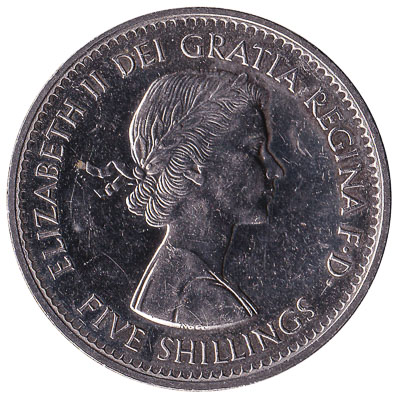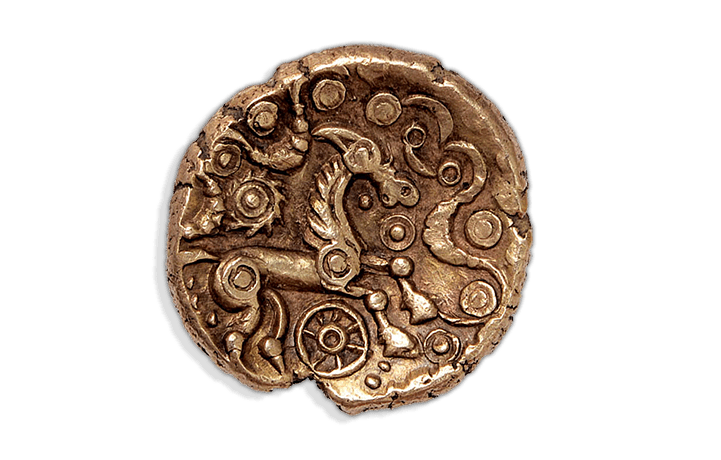All our coins bear HM The Queen's head on one side. On the edge of our coins, the letters D.G.REG.F.D. always appear after the Queen's name. The letters stand for the Latin words Dei Gratia Regina Fidei Defensor, which means 'By the Grace of God, Queen, Defender of the Faith'. text taken from and copyright of projcetbritain.com
|
© Copyright - please read |
World Coin Search. The World Coin Price Guide is a complete catalog of values for World coins from 1600 to date. Created by NGC and Active Interest Media’s NumisMaster, the price guide pages are arranged by Krause catalog numbers and include values, images and specifications such as weight, composition, engraver and current bullion values.
© Copyright Mandy Barrow 2013
Mandy is the creator of the Woodlands Resources section of the Woodlands Junior website.
The two websites projectbritain.com and primaryhomeworkhelp.co.uk are the new homes for the Woodlands Resources.
Mandy left Woodlands in 2003 to work in Kent schools as an ICT Consulatant.
She now teaches computers at The Granville School and St. John's Primary School in Sevenoaks Kent.
- The use of coins in Britain dates back thousands of years to Celtic tribes which produced their own quite stylised coins.
- The value of some coins fluctuated, particularly in the reigns of James I and Charles I. The value of a guinea fluctuated between 20 and 30 shillings before being fixed at 21 shillings in December 1717. These are denominations of British, or earlier English, coins – Scottish coins had different values.
- Coin value - $80-100. 1 penny 1806 (1806-1807) copper BRITANNIA / Britannia seated left GEORGIVS III D G REX / 1806 / Laureate head right Coin value - $3-4. 1/2 penny 1807 (1806-1807) copper BRITANNIA / Britannia seated left GEORGIVS IIII D G REX / 1807 / Laureate head right Coin value - $1-3. 1 farthing 1806 (1806-1807) copper.
- Undated 20p – (2008), rarest of 20p coins. Between November 2008 and 2009, 136,000,000 20p.
10 of the most valuable British coins in history
With a new record set at Baldwin's, British coins are big money in the collecting world
If you're a regular reader, you'll have seen that Baldwin's set a new world record for a British coin last week, selling the incredibly rare Edward VIII sovereign for 516,000 ($896,393).
The sale is the latest in a long line of successes for the sector, which,having seena 13.3% pa increase in value in the last decade (according to the GB200 Coin Index),is proving hugely popularwith investors.
In appreciation of the booming market, we take a look at the top 10 most valuable British coins ever sold at auction....
- 1706 Queen Anne five guineas - 55,758 ($94,000)
The coin's reverse was altered to reflect the union between Scotland and England -Image: Heritage Auctions
In 1706, England and Scotland were united by the Treaty of Union, establishing the United Kingdom of Great Britain. With Queen Anne on the throne, it was decided that coins (which at the time showed the arms of England, Ireland, Scotland and France) should be revamped, with the arms on the shield changed to reflect the new state.
Due to the old-style calendar, coins dated 1706 appear with both designs today. One of the post-union coins, graded AU58, sold for $94,000 at Heritage Auctions in January 2014.
- 1933 one penny - 80,000 ($134,400)(estimated value)
Just six or seven coins were produced, with some later stolen from the foundations of a church - Image: Wikimedia Commons
If you're a British coin collector, chances are you've heard of the 1933 one penny, but never seen one. Minted under King George V, they are renowned as one of Britain's rarest regular issues.
Their rarity lies in the fact that, in 1933, banks in England possessed so many pennies that it was simply not necessary to strike any more. However, tradition dictated that a new penny would be placed under the foundation stone of new buildings, and the Mint was obliged to strike a scant few for this purpose.
No more than six or seven coins were produced, with three placed under buildings and the rest kept in the Mint's own collection. In the 1970s, it emerged that thieves had stolen the set of coins under the Church of St Cross near Leeds, and it was decided that the set that lies beneath the foundation of St Mary's Church should be removed for sale.
The auction, held with the blessing of the church's bishop, took place at Sotheby's in the 1970s, but it's not certain what the final price was. Today, the coin is estimated to be worth 80,000if it ever appears for sale.
- 1839 Victoria 5 - 83,638 ($141,000)
The 'Una & the Lion' design is considered one of the finest ever seen on a British coin - Image: Heritage Auctions
'Her Finest Coin from Her Coronation Proof Set'.
That's the title Heritage Auctions bestowed on the 1839 Queen Victoria I 5 coin that sold for $141,000 in its January 2014 auction.
Bearing the renowned 'Una & the Lion' design on its reverse, the coin at Heritageis graded PR63 Ultra Cameo and barely has a scratch on its surface. Deemed the finest the cataloguer had seen in 40 years of handling British coins, it is considered one of the most beautiful British coins ever created.
- George III 1819 sovereign - 186,000 ($288,765)

The George III sovereign was struck using gold supplied by private sources, rather than the Bank of England - Image: Spink
Only 3,574 examples of the George III 1819 sovereign were ever struck, which is about a day's work for the Royal Mint. However, for unknown reasons, the coin was actually struck over five instalments from August to November 1819.
Even more unusually, the coins were struck not with gold supplied by the Bank of England, but fromprivate sources, thought to have been firms in the City of London.They were put into circulation, but were already rare by 1821, when a survey showed that just two remained.
Today, it is thought that just 10 examples exist, making it one of the rarest of all British sovereigns. When Spink auctioned the renowned Bentley Collection in May 2013, its example sold for 186,000.
- 1663 Charles II Petition crown - 207,000 ($130,872)

'THOMAS SIMON MOST HVMBLY PRAYS YOVR MAJESTY TO COMPARE THIS HIS TRYALL PIECE WITH THE DVTCH' - Image: Wikimedia Commons
After King Charles II took the throne in 1660, it was clear that England needed new coinage to replace that used under Cromwellian rule. In 1663,English medallist Thomas Simon submitted this coin as a personal petition that his should be the new design.
It reads: 'THOMAS SIMON MOST HVMBLY PRAYS YOVR MAJESTY TO COMPARE THIS HIS TRYALL PIECE WITH THE DVTCH AND IF MORE TRVLY DRAWN & EMBOSS'D MORE GRACE; FVLLY ORDER'D AND MORE ACCURATELY ENGRAVEN TO RELIEVE HIM.'

Simon's petitioncame too late for Charles II to change his plans. However, it is considered one of the finest examples of coin engraving in British history.
An example sold at Spink in 2007 for 207,000.
- 1642Charles IPattern Triple Unite - 241,500 ($407,362)
Charles I wished for peace in the English civil war, with the king shown holding both his sword and an olive branch - Image: Wikimedia Commons
There is only one example of the Charles I Triple Unite, or Three Pound Piece. The highest denomination ever made during the hammered coinage period, it was only produced during the English civil war and shows Charles I with his sword and an olive branch - a symbol of his wish for peace, but preparedness to fight.
The coin is known as the Triple Unite due to its inscription, which reads: 'The religion of the Protestants, the laws of England and the liberty of Parliament. Baldwin's sold the only extant example for 241,500in September 2006.
- 1703 Queen Anne Vigo five guinea - 296,160 ($498,991)
What better use for the spoils of war than the new coinage of a monarch? - Image: Gorringes
In 1703, back when the British Navy roamed rampant across the seven seas, Queen Anne took to the throne. As for all new monarchs, a new coinage was due, but where would the gold come from? Cash-strapped Britain had spent much of its fortune waging wars across the continent.
Using gold captured from Spanish galleons at the Battle of Vigo Bay, the Royal Mint created the 'Vigo' five-guinea piece in 'remembrance of that glorious action'. Considered one of the most exotic coins ever created in Britain, it exists in numbers lower than 25 today, with one selling for 296,160 at auction in 2012.
- 1663 Charles II Reddite crown - 396,000 ($667,209)
Thomas Simon finally saw his design in circulation, having submitted the Petition crown (above) too late for use - Image: Spink
When Thomas Simon submitted the Petition crown (above), Charles II would have liked itas his official coin, but it was already too late and a design was chosen.
However, Simon's coin would make it into circulation later in the year, with the Reddite crown struck from the very same dies. The only change is the inscription, which reads on the Reddite coin: 'Reddite quae Caesaris Caesari &ct post' or 'Render unto Caesar the things which are Caesar's'.
Celebrating the return of the monarchy to the throne, the coin is hailed by numismatists as a masterpiece. An example sold for 396,000 at a March 2014 sale at Spink, earning its title as the most valuable British silver coin sold at auction.
- 1344 Edward III florin - 460,000 ($775,040)
The coin is also named the Double Leopard due to the two leopard heads that appear either side of the king, which are often mistaken for lions - Image: Fitzwilliam Museum
Edward III had a job to do when he took the throne in 1327. His father, Edward II, had failed to pacify the Scots and led an oppressive reign at the end of his life.
Edward III however was a progressive ruler and fearsome military dictator. One of his attempts to bring England back to the forefront in Europe was to create a coin that could be used across the continent, bringing merchants to England.

The result was the spectacular Edward III florin, or double leopard, of 1344. An attractive piece, it nonetheless proved to be of little use as its gold content was underweight, and merchants would not accept it.
A past record holder for any British coin, it sold for 460,000 in July 2006. Further examples of the three known to exist can be seen at the British Museum.
- 1937 Edward VIII sovereign - 516,000 ($896,393)
Edward's sovereign never made it into circulation due to his abdication, but caused controversy from the outset - Image: Baldwin's
King Edward VIII's tale of abdication is one of the most famous love stories ever told: the young king that gave up his throne for the love of an American divorcee. It's long been a collector favourite, with memorabilia from the Duke and Duchess of Windsor always seeing top results.
The king's departure meant that the coins produced for his reign never made it into circulation, and therefore are incredibly rare.
The sovereign caused controversy when created as Edward refused to face the opposite direction to his predecessor, a tradition that had been established when Charles II regained the throne and wished to face the opposite direction to Oliver Cromwell.
Today, a stunning example of the coin in proof condition stands as the most valuable British coin ever sold at auction, with Baldwin's bagging the record following a 516,000 sale on May 8.
British Coins Names
View our rare coins for sale

More coinsnews
British Coins Worth
Your collecting
British Coins Pictures
View our stock items for sale | Portfolios for sale